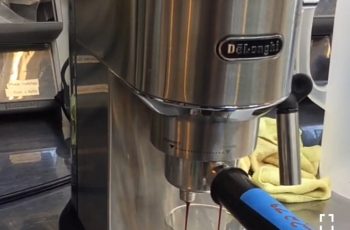As soon as Bunn coffee makers are powered on, they have water at the ready, enabling them to brew a fresh pot of coffee more quickly than comparable drip brewers. While certain coffee enthusiasts are reluctant to purchase a Bunn due to concerns that continual hot water access might lead to higher electricity costs, the reality is that Bunn coffee machines are quite energy-efficient. They typically add just $2 to $4 to the monthly electricity expenses.
In this article, we will explain why Bunn’s coffee makers require substantially less energy than you might estimate, and provide you with some recommendations for reducing the energy they use beyond this amount.
Why Bunn Coffee Makers Are Concerned With Electricity
When you want a fresh pot of coffee, you don’t have to heat water every time. Instead, your Bunn coffee maker always has water at the desired temperature.
When it comes to keeping up with the morning rush, the few minutes it takes to set up a drip coffee maker can make all the difference. The Bunn coffee maker’s short brew time makes it a favorite with business owners as well as homeowners who prefer to have fresh coffee readily available.
Many coffee lovers are concerned that the Bunn coffee makers will increase their electric bills because they know that it costs money to keep water hot at all times. Thankfully, this isn’t true. Bunn coffee makers use remarkably little power and do not increase the owner’s electricity bill significantly.
What Is The Power Consumption Of The Bunn Coffee Maker
Purchasing the type of Bunn coffee maker can have a big impact on the level of energy it consumes. A 12-cup coffee maker will consume more watts than a small 1-cup coffee maker.
In the average home Bunn coffee maker, about 1100 watts of electricity are consumed each day, adding about $2 to $4 per month to the energy bill, for a total of about $24 to $48 per year.
Energy-Saving Tips For Bunn Coffee Makers
It’s not necessary to make any changes if you are satisfied with the power consumption of your Bunn coffee maker. It might seem like a small amount to you, but once you multiply that amount by the number of coffee mugs you consume every week, they become very relevant figures. Would you like to minimize its effects? Consider these five energy-saving tips for brewing your coffee if you want to reduce the amount of power your Bunn coffee maker uses:
1) Switch Off The Bunn Coffee Maker
You will be surprised to learn that a large part of the energy consumed by your coffee maker comes from its standby mode. Turning off the coffee maker after the water reservoir is empty will help you save energy. Even unplugging it will reduce you quite a few watts.
2) Thoroughly Clean Your Coffee Maker Regularly
Water tanks accumulate mineral residue over time that interferes with your coffee maker’s heating function. If you keep it clean, you will be able to ensure that it keeps heating efficiently and that your energy bills will not increase. Once a month, you should clean your coffee maker thoroughly.
3) Purchase An Energy-Efficient Bunn Coffee Maker
Keep in mind that all the above numbers represent averages and not absolute values. The type of Bunn coffee maker you use can make a significant difference within those ranges. You should look for energy-saving options for your office or homes, such as automatic shutoffs or low-wattage models.
4) Choose Reusable Single Cup Filters
A single-serve coffee maker is a particularly energy-intensive product. Brewing consumes a lot of energy, but plastic pots create additional waste. Consider reusable coffee filters to save on cost as well as go green.
5) Try Making Cold Brew
You may want to combine your coffee addiction with your thirst for refreshments during summer and in warmer climates. Consider cold-brewed coffee since it doesn’t need to heat, meaning it consumes fewer watts.
Over 1000 watts of electricity are consumed per day by Bunn coffee makers, adding less than $5 per month to the electric bill. You can lower your coffee maker’s energy consumption by unplugging it during the day or turning off the warming plate after brewing your coffee.
Conclusion
Although it seems so simple, brewing coffee uses a great deal of power. Whether you love the environment or just want to save a few bucks on your electric bill, consider these tips to reduce your energy footprint. Making just a few changes can make a huge difference to your life and the world we live in.


